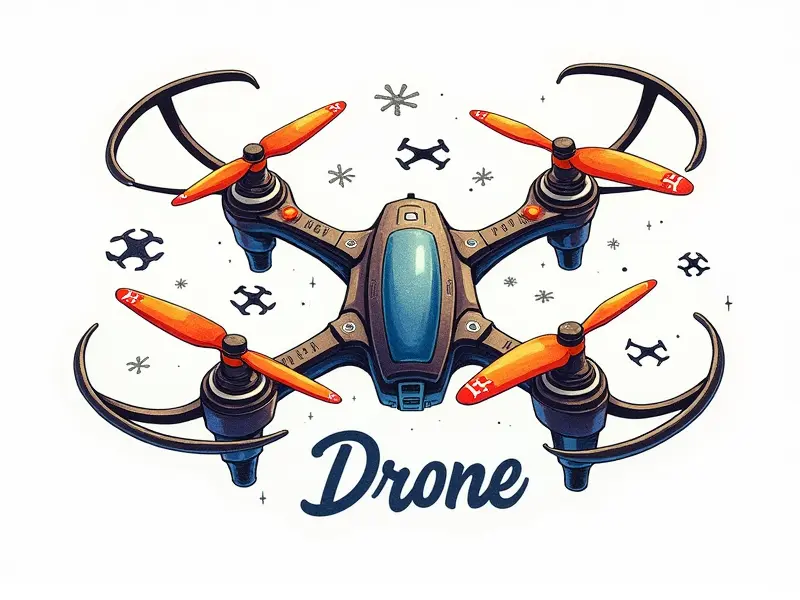Tips on balancing drone motors

Mastering Motor Balance in RC Drones
When it comes to flying remote control (RC) drones, achieving motor balance is crucial for optimal performance and stability. A well-balanced drone ensures smooth flight patterns, enhanced maneuverability, and reduced wear on components. This article delves into the nuances of balancing motors in your RC drone, providing you with expert tips to elevate your flying experience.
Achieving Precision with Balanced Drone Motors
The precision required for a balanced motor setup can make or break your flight performance. Motor balance involves ensuring that all motors are spinning at equal RPMs and have consistent torque output. This is particularly important in multirotor drones, where even the slightest imbalance can cause instability.
Quick Guide to Balancing Motors
- Step 1: Inspect Motor Mounts: Check for any loose or misaligned motor mounts that could be causing an imbalance. Tighten and adjust as necessary.
- Step 2: Measure RPM: Use a tachometer to measure the RPM of each motor while the drone is stationary. Ensure all motors are within a tolerable range (typically ±5% of the average).
- Step 3: Adjust Propellers: Swap propellers between motors to identify any discrepancies in performance. Replace or adjust props as needed.
Tips for Flawless Motor Balance
To achieve flawless motor balance, consider the following tips:
- Use High-Quality Components: Invest in premium motors and propellers that are designed to maintain consistent performance over time.
- Regular Maintenance: Clean and lubricate your motors periodically to prevent wear and tear from affecting balance.
- Calibrate Electronics: Ensure all electronic components, such as ESCs (Electronic Speed Controllers), are calibrated correctly for optimal performance.
Optimize Your Drone's Performance
A balanced motor setup is just one aspect of optimizing your drone’s overall performance. Other factors to consider include:
- Battery Quality: Use high-capacity, long-lasting batteries that can sustain consistent power output.
- Firmware Updates: Keep your drone's firmware up-to-date for the latest features and bug fixes.
- Flight Environment: Choose a suitable flying area with minimal wind interference to maintain stability during flight.
Fine-Tune Your Drone Motors
Fine-tuning your motors involves making small adjustments to achieve the best possible balance. Here’s how you can fine-tune:
- Adjust Propeller Pitch: Fine-tune propeller pitch to optimize thrust and efficiency.
- Bias Motor Settings: Adjust ESC settings slightly to compensate for any motor discrepancies identified during testing.
- Monitor Flight Data: Use flight data logs to analyze performance and make informed adjustments after each flight session.
Easy Steps to Balanced Motors
Maintaining balanced motors is easier when you follow these straightforward steps:
- Pre-flight Checks: Conduct thorough pre-flight checks to ensure all components are in working order and properly aligned.
- Post-Flight Inspections: After each flight, inspect your drone for any signs of imbalance or wear that need addressing.
- Regular Calibration: Regularly calibrate ESCs to maintain optimal motor performance throughout the life of your drone.
Why Motor Balancing Is Crucial for Drones
Motor balancing is crucial because it directly impacts several aspects of drone operation, including:
- Flying Stability: Balanced motors ensure smooth flight patterns and prevent unwanted oscillations.
- Battery Efficiency: Well-balanced motors consume power more efficiently, extending battery life during flights.
- Mechanical Reliability: Regular balancing helps reduce stress on mechanical components, prolonging the lifespan of your drone.
The Art of Balancing FPV Racing Drone Motors
For FPV (First-Person View) racing drones, achieving motor balance is even more critical due to high-speed maneuvers and tight turns. Here are some specialized tips:
- Precision Propellers: Use propellers designed specifically for FPV racing with precise pitch and diameter.
- Advanced Calibration Tools: Employ advanced calibration tools that provide detailed data on motor performance.
- Dedicated Flight Logs: Maintain dedicated logs for each flight to track changes in motor balance over time.
Simplified Guide to Motor Balancing
A simplified guide to motor balancing includes these key steps:
- Inspect and Adjust: Regularly inspect motors, propellers, and mounts for any signs of imbalance or wear. Make adjustments as needed.
- Maintain Consistency: Ensure all motors are consistently powered and aligned to prevent performance discrepancies.
- Monitor Performance: Continuously monitor motor performance through flight logs and real-time data during flights.
Fast Fixes for Unbalanced RC Helicopter Motors
If your RC helicopter motors are unbalanced, try these quick fixes to restore stability:
- Balancing Weights: Add or remove small weights from the rotor blades to balance them properly.
- Tuning Propellers: Adjust propeller pitch and orientation to achieve optimal thrust symmetry.
- Maintain Lubrication: Ensure all moving parts are well-lubricated to prevent friction-induced imbalances.
Conclusion
Balancing motors in your RC drone is a fundamental aspect of achieving optimal performance and stability. By following the tips outlined in this article, you can ensure that your drone operates smoothly and efficiently. Regular maintenance, precise calibration, and continuous monitoring are key to maintaining motor balance over time. With these practices in place, you’ll be able to enjoy seamless flights and extended battery life.

